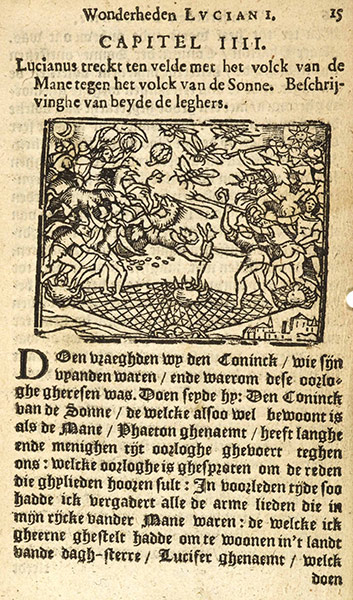
This is widely thought to be the first ever science fiction story, dating from the 2nd century AD. (This is a 17th-century Dutch edition.) True History is about a war to rule the Morning Star by the kings of the Moon and the Sun. Some of its notable characters include dog-faced men fighting on winged acorns, cloud-centaurs and stalk-and-mushroom men. The illustration shows a battle between the Moon and Sun people. Photograph: British Library Board
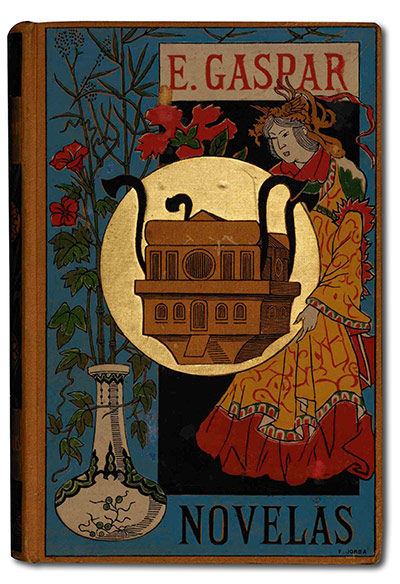
This is the earliest known portrayal of a time machine. Spanish diplomat and playwright Enrique Gaspar y Rimbau suggests that time is related to the atmosphere; his inventor, Sindulfo, creates an electric space-time machine that escapes the Earth’s atmosphere and flies against the Earth’s rotation Photograph: British Library Board
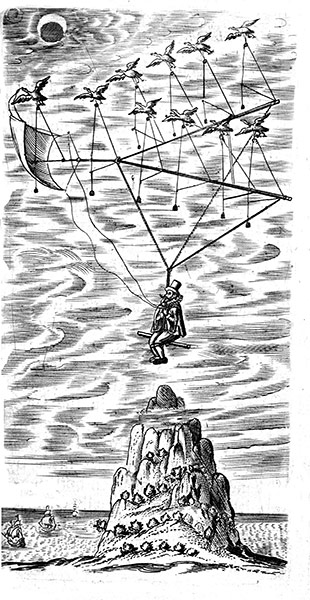
In this remarkable story, written in the 1620s, Domingo Gonsales trains a flock of ganzas to transport him to the moon. First published in 1638, the story influenced other books. John Wilkins, the future brother-in-law of Oliver Cromwell and a keen promoter of scientific understanding, wrote The Discovery of a World in the Moone (1638, revised 1640) and Mathematicall Magick (1648), both of which considered whether the Moon might support life and how to reach it. Wilkins suggested three ways: a flying chariot, wings strapped to the body or conveyance by large birds Photograph: British Library Board
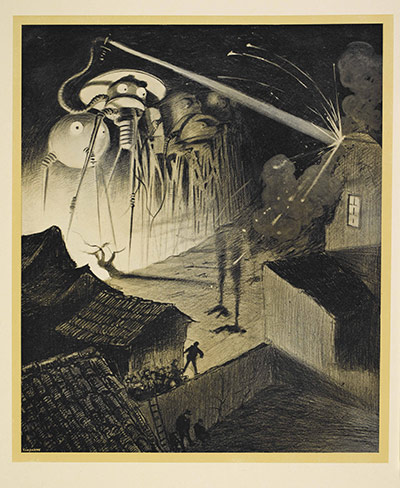
This is an illustration from the Belgian edition of HG Wells's The War of the Worlds. This 1898 novel is a cornerstone of any science-fiction library, but it later became notorious. In 1938 Orson Welles broadcast a radio adaptation, heard across New York and New Jersey. The original was updated and presented as breaking news, suggesting that an invasion by Martians was currently in progress. Some listeners panicked, thinking the events described in the programme were real Photograph: British Library Board
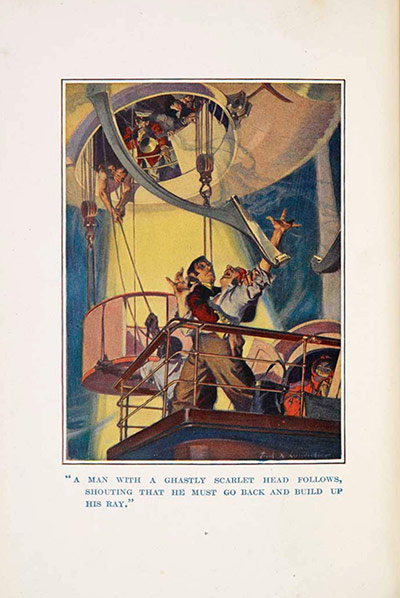
This story, first published in 1905, recounts problems encountered one night by the dirigibles that deliver mail across the Atlantic in the year 2000. Kipling presented it as a news report from a magazine of the future Photograph: British Library Board
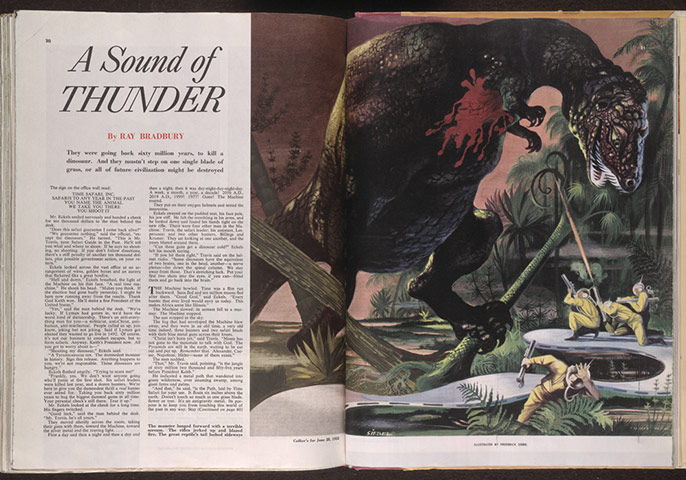
This story, first published in Collier’s Weekly, is a fascinating fictional exploration of how the present depends on the past. A time-traveller inadvertently steps on a butterfly during the age of the dinosaurs – and returned to the present discovers a number of subtle but disturbing changes Photograph: The Estate of Frederick Siebel
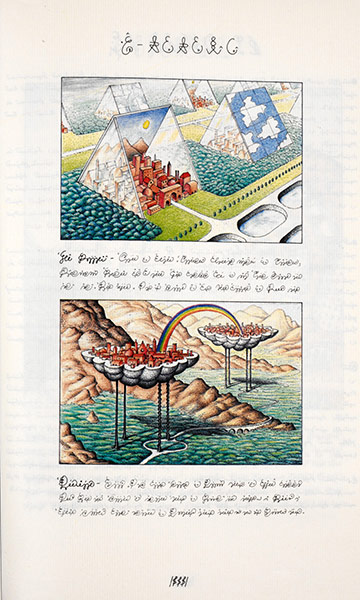
Written in the late 1970s, this is an inspired work by Italian artist and designer Serafini. It takes the form of a visual encyclopedia of an unknown world, written in an unknown language Photograph: Luigi Serafini
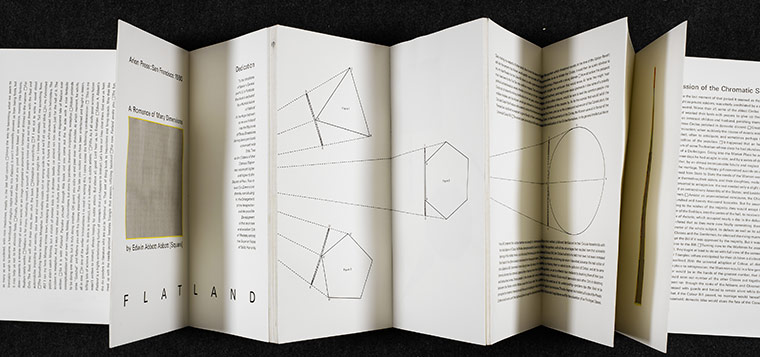
Flatland, first published in 1884, imagines a two-dimensional world; the story, narrated by ‘A Square’, explores one-dimensional beings who have no comprehension of a two-dimensional world, and a three-dimensional being that can only partly be seen in two dimensions. The book is a satire on the constraints of Victorian society and has become a cult classic. This artist’s book from 1980, extends to 30 feet when fully open Photograph: Arion Press
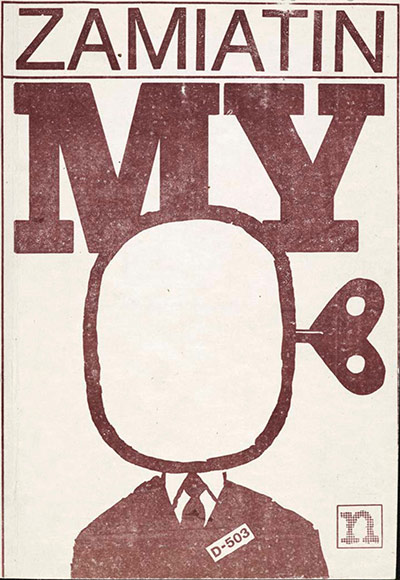
This Polish samizdat edition of Zamyatin's 1921 Russian dystopian novel was published in Warsaw. My translates as "We". The novel influenced George Orwell’s Ninteen Eighty-Four: set several centuries in the future after the Two Hundred Years’ War has wiped out most of humanity, it takes place in a highly regimented city-state encircled by the "Green Wall", which is supposed to keep out the world Photograph: Supernowa Publishing
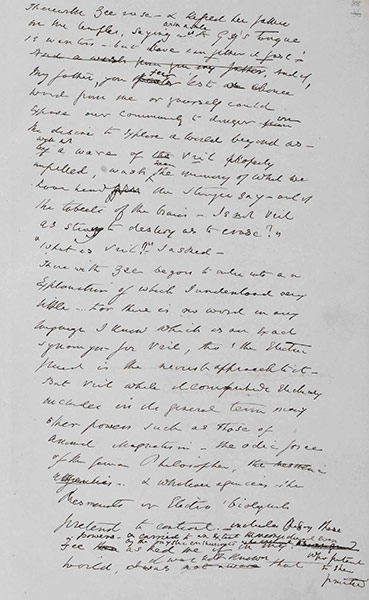
A vastly superior underground race derives its power from an electromagnetic force called vril, which gives its users the powers of telekinesis, telepathy and healing. The novel was later reprinted as Vril: The Power of the Coming Race, and the beef-drink Bovril was named after it Photograph: British Library Board
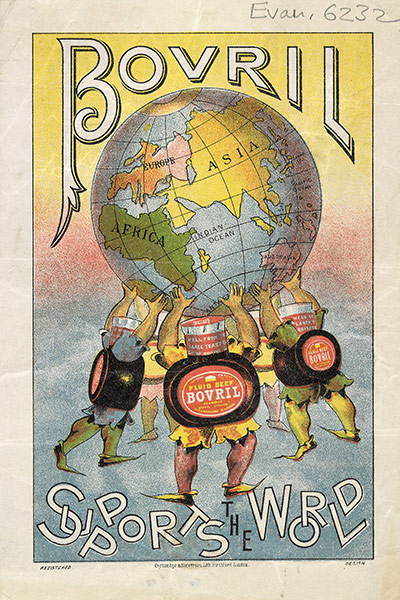
An astute marketing move was made in the 1870s by the owners of the energy drink, who named their product ‘Bovril’ to capitalise on Vril’s association with power and energy Photograph: Reproduced with kind permission of Unilever

Amazing Stories was launched in April 1926 by Hugo Gernsback's Experimenter Publishing, the first magazine devoted to science fiction. It was published for 80 years Photograph: The Estate of Frank R. Paul
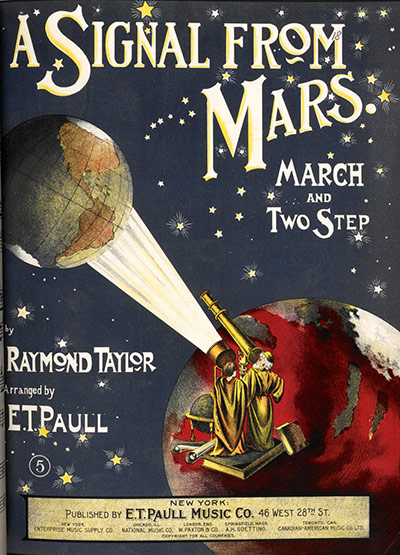
This is a musical composition, a conventional march, but the title and cover image suggests that the interest in possible contact with life on Mars was strong enough to sell music on the back of it. In 1901, the inventor Niklola Tesla had claimed that radio signals he had received could be coming from Mars or Venus Photograph: British Library Board

